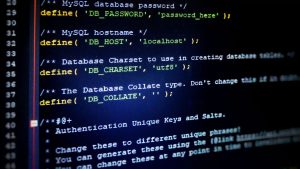Accurate Time Matters for BSD Systems
Accurate timekeeping plays a bigger role in system management than many realize. Servers depend on correct timestamps for logging, file management, authentication, and scheduled tasks. Keeping time with clock utilities on BSD ensures these processes run smoothly, preventing drift that can cause confusion, lead to data corruption, or even break software operations that rely on precise timing.
For BSD systems, using reliable clock utilities ensures everything stays synchronized, much like a world clock keeps time consistent across different regions. Accurate synchronization is crucial for maintaining system stability; whether handling emails, hosting databases, or running daily backups, even small timing errors can quickly pile up into major headaches if left unchecked.
Taking the time to understand BSD’s approach to clock management helps keep servers and applications running reliably. A strong clock setup is one of those invisible foundations that makes everything else smoother.
Key Tools for Time Management on BSD
BSD operating systems offer several tools designed specifically to handle timekeeping tasks. Utilities like ntpd, openntpd, and chronyd help maintain system clocks by syncing with internet-based time servers. Each tool serves the same core purpose but offers different advantages depending on the setup.
Choosing the right tool depends on server requirements, network conditions, and administrative preferences. Some setups prioritize lightweight tools, while others need full-featured solutions capable of handling complex environments.
Setting up and maintaining time utilities isn’t a one-size-fits-all task. Understanding the strengths of each option allows administrators to make better decisions for their systems.
Setting the System Clock Manually
While time synchronization services are preferred, sometimes there’s a need to set the system clock manually. BSD systems make this easy through simple commands that adjust the local system time without needing any external resources.
Manual setting usually comes into play during first-time server setups, maintenance windows, or isolated network environments. The date command in BSD allows users to specify exact times and dates, making quick adjustments painless.
Knowing how to perform these manual tweaks ensures the system clock can be corrected swiftly when automated services are unavailable or have not yet been configured.
Configuring NTP Services on BSD
Network Time Protocol (NTP) remains one of the most trusted methods for keeping computers synchronized across different systems and locations. BSD systems often come with NTP support ready to install and configure through their package managers.
Configuration involves setting trusted time servers, defining update intervals, and managing failover strategies if a server becomes unreachable. Good configurations build resilience into the system and help avoid subtle errors caused by time drift.
Testing NTP synchronization after setup confirms that updates are happening properly. Watching the system clock stay steady over days and weeks shows the value of careful planning.
Monitoring Clock Drift Over Time
Even the best systems experience some amount of clock drift. BSD administrators can monitor this drift using built-in logging and monitoring tools. Keeping an eye on how much the system clock slips helps fine-tune synchronization strategies.
Logs from NTP services and basic status commands provide valuable information about drift patterns. Small corrections are normal, but sudden or large jumps signal deeper issues worth investigating.
Proactively monitoring time drift prevents small problems from growing into larger reliability issues. It’s one of those small maintenance tasks that offers major benefits in system stability.
Handling Hardware Clock Adjustments
BSD systems separate the system clock (software-based) from the hardware clock (BIOS or RTC). Keeping both in sync is vital because the hardware clock provides the base time whenever the system boots.
Utilities like hwclock allow reading from and writing to the hardware clock directly. Administrators often schedule regular syncs to ensure the hardware time remains close to the system time.
A mismatched hardware clock can cause servers to boot with wildly incorrect times, confusing both users and automated processes. Careful syncing protects against these surprises.
Dealing with Timezone Settings Correctly
Timezone misconfigurations create confusing problems that ripple across servers and applications. BSD systems allow users to define their timezone environment settings clearly through configuration files and symlinked timezone data.
The tzsetup utility simplifies this task, guiding users through selecting the correct timezone during installation or later maintenance. Adjusting timezone settings ensures logs, applications, and reports all show the correct local or coordinated time.
Matching the system timezone to user expectations avoids misunderstandings and keeps maintenance, troubleshooting, and auditing processes accurate.
Best Practices for Public Time Server Usage
Choosing reliable public time servers strengthens overall system reliability. BSD administrators should use pools of trusted time servers distributed across different geographic regions for better accuracy and redundancy.
Official public NTP pools like pool.ntp.org offer a great starting point. BSD’s configuration files make it easy to list several servers, creating a backup plan if any one server fails.
Treating public time server selection seriously improves time synchronization results and shields systems from common network or server outages.
Synchronizing Time in Virtualized BSD Environments
Virtual machines often suffer from different timing challenges compared to bare metal. Resource sharing, CPU scheduling, and network delays introduce new factors that affect system clocks.
BSD administrators running virtualized instances must be even more attentive to timekeeping. Special utilities or hypervisor tools sometimes help sync guest system clocks more accurately with their host systems.
Planning for these challenges prevents unexpected problems like authentication failures, cron jobs firing late, or transaction errors in hosted services.
Building a Reliable Timekeeping Plan
Reliable timekeeping on BSD systems isn’t something that happens by chance — it requires careful planning and proactive maintenance. A strong timekeeping setup starts with selecting and configuring proper utilities like NTP or Chrony, regularly checking synchronization status, and ensuring the hardware clock remains accurate. It also means planning for special cases, such as maintaining precise time within virtualized environments, where delays and drifts can become more pronounced if left unmanaged.
By giving consistent attention to even the small details of clock management, administrators can build systems that are stronger, more stable, and easier to troubleshoot. A few seconds of time drift may not seem like much at first, but over weeks or months, these tiny discrepancies can compound into serious problems — causing inaccurate logs, failed authentication attempts, or missed scheduled tasks. Those who prioritize timekeeping reduce the likelihood of these issues, leading to fewer unexpected errors and a smoother, more predictable application performance overall.
Integrating careful time management into the core of system design is an investment that continually rewards itself. Systems that maintain accurate, synchronized clocks benefit from cleaner audits, more reliable backups, and better coordination across distributed environments. In a world where every transaction, message, and operation relies on precise timing, keeping time with clock utilities on BSD ensures that every minute — and every process — runs exactly as it should.










No Responses